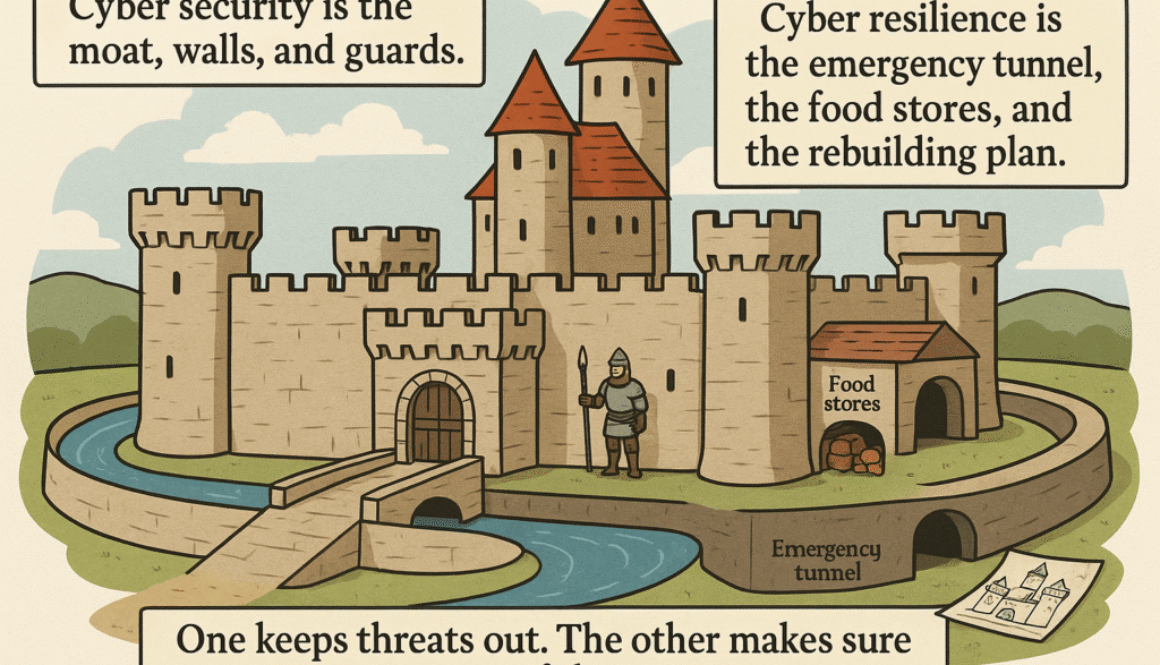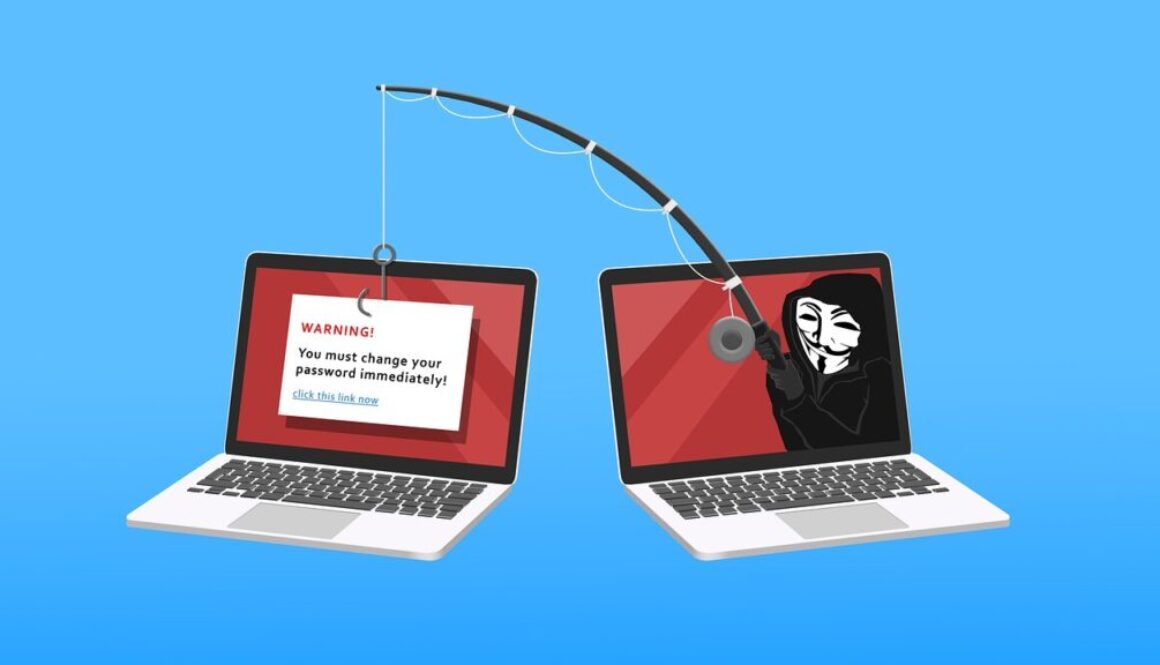Security v Resilience
I am often asked what the difference is between Cyber Security and Cyber Resilience.
It’s a great question, because the two terms are often used interchangeably, but in reality, they mean very different things. Understanding that difference is crucial if you want your business not only to stay safe but also to stay standing when things go wrong.
Cyber Security: Building Strong Defences
Cyber security is all about keeping the bad guys out. It’s the firewalls that block unwanted visitors, the multi-factor authentication that stops password thieves, and the software patches that close off security holes.
The mindset is defensive: “How do we stop an attack before it happens?”
Think of it like locking your doors, setting an alarm, and posting guards around your business. The stronger the locks and guards, the harder it is for anyone to break in.
Cyber Resilience: Surviving and Thriving
Cyber resilience takes a different view. It says: “What if the attacker still gets in?”
Resilience is about continuity and recovery, making sure your business can carry on, adapt, and recover quickly even if an incident occurs. That means:
Having reliable backups and knowing how to restore them,
Running regular incident response drills,
Communicating clearly with staff, customers, and regulators,
Keeping critical services online while the clean-up happens.
The mindset is adaptive: “Even if the worst happens, how do we keep moving?”
Using the same analogy: cyber resilience is like having an escape route, insurance, and emergency supplies, so that even if someone smashes through the door, you’re not paralysed.
The Key Difference in One Line
Cyber Security = protecting against attacks.
Cyber Resilience = preparing to recover when they happen.
Why Both Matter for SMBs
Too often, smaller businesses think cyber security alone will cover them. They install antivirus, set up strong passwords, and call it done. But prevention isn’t perfect.
A phishing email slips through.
A laptop gets stolen.
A supplier suffers a breach that exposes your data.
Without resilience, the ability to respond, recover, and adapt, even a minor incident can snowball into lost clients, regulatory fines, or weeks of downtime.
With resilience, the same event might cause a short disruption, but you bounce back stronger, with customers reassured that you had a plan.
A Castle Analogy
Picture your business as a castle:
Cyber security is the moat, walls, and guards.
Cyber resilience is the emergency tunnel, the food stores, and the rebuilding plan.
One keeps threats out. The other makes sure you survive if they get in.
Cyber Security vs Cyber Resilience
| Aspect | Cyber Security | Cyber Resilience |
|---|---|---|
| Definition | Protecting systems, data, and networks from attack. | Preparing for, responding to, and recovering from attacks. |
| Primary Goal | Keep threats out. | Keep the business going. |
| Mindset | Defensive: “Stop it happening.” | Adaptive: “Cope when it happens.” |
| Focus Areas | Firewalls, MFA, antivirus, patching, monitoring. | Backup, recovery, incident response, business continuity. |
| Scope | Mainly IT/security teams. | Whole organisation (boardroom to front line). |
| Outcome | Reduced likelihood of attack. | Reduced impact of attack. |
| Analogy | Locks, alarms, and guards around a castle. | Escape routes, emergency supplies, rebuilding plan. |
| Weakness if Alone | Can fail if attackers find a way in. | Can fail without strong protection in the first place. |
The Takeaway
If you only invest in cyber security, you’re hoping your walls never crack.
If you build resilience too, you’re ready for the day they do.
That’s the difference. And in today’s world, it’s not a choice between them, you need both.



 For the blissfully unaware (lucky you), a humble-brag is when someone disguises a boast as a complaint or a piece of faux modesty! Now you know.
For the blissfully unaware (lucky you), a humble-brag is when someone disguises a boast as a complaint or a piece of faux modesty! Now you know.





